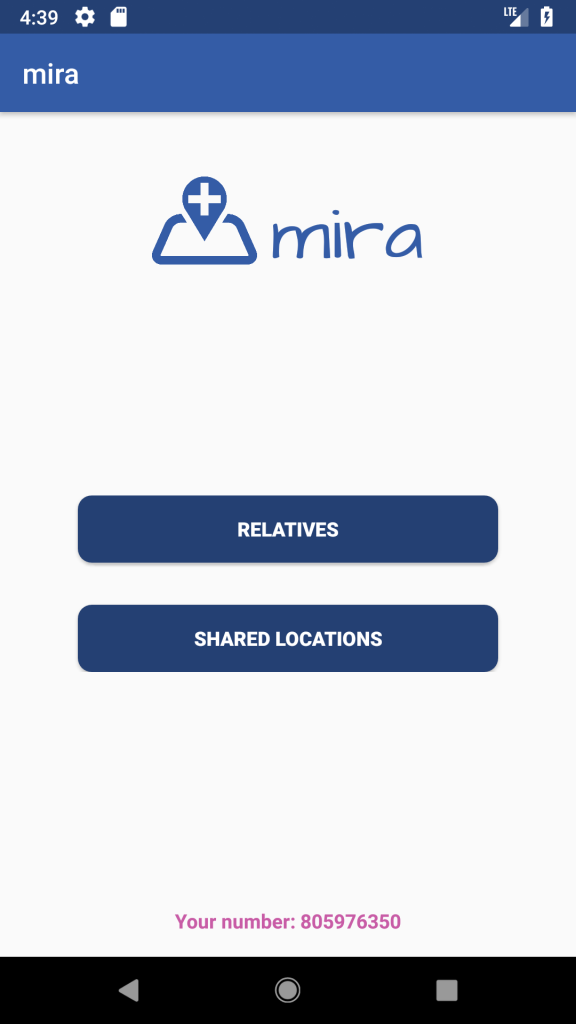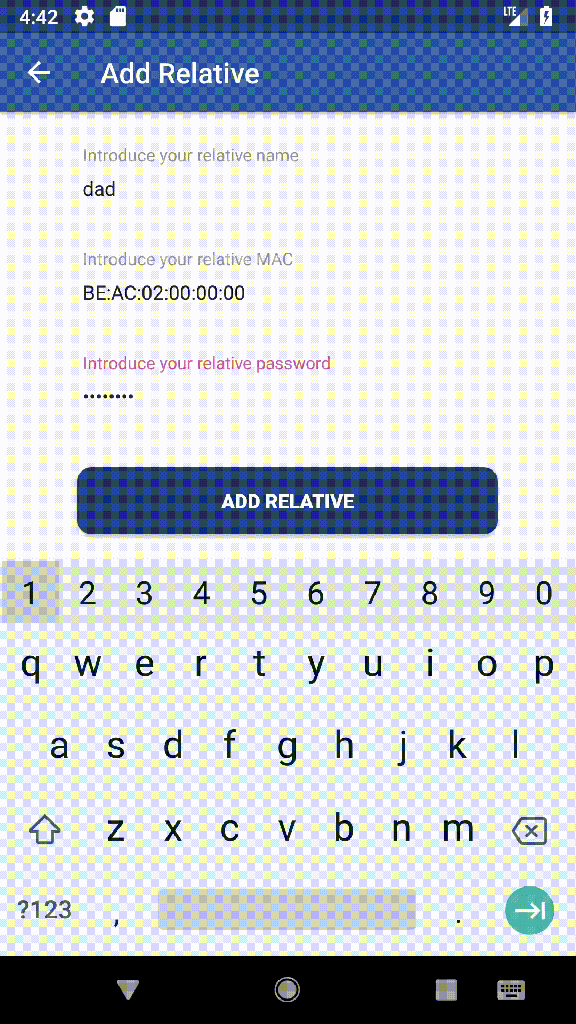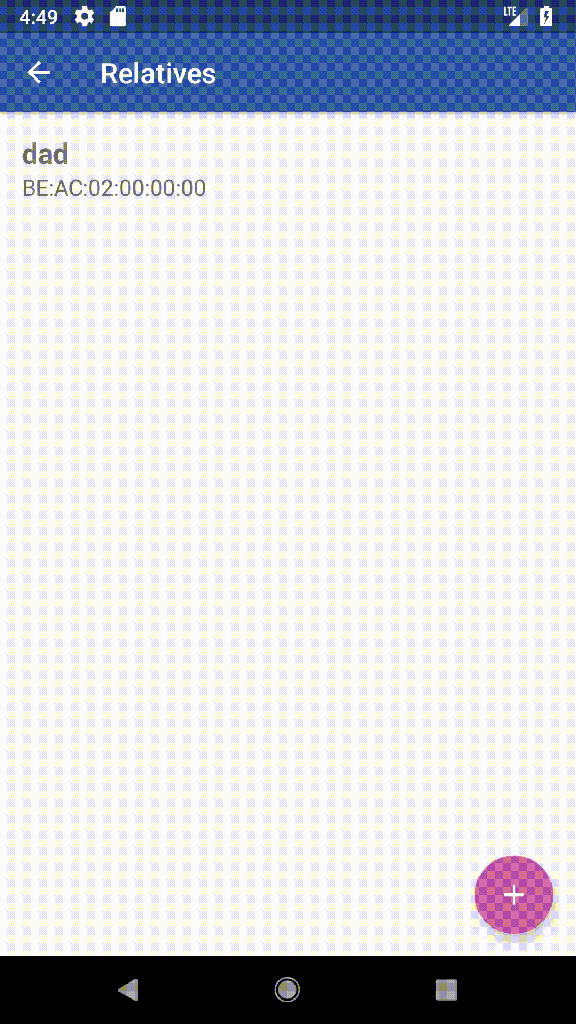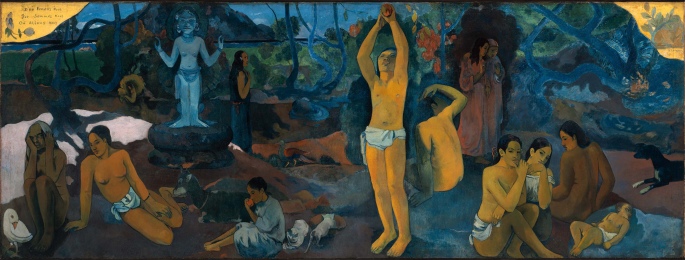
I recently discovered this painting by Paul Gauguin and it fascinates me since that moment. The painting, seen from right to left, is an allegory of human life passing through birth, D’ou Venons Nous – Where do we come from?, the present, Que Sommes Nous – What are we?, and death, Où Allons Nous – Where are we going?.
In this post, we make a similar journey through our participation in the Eclipse Open IoT Challenge 4.0 with the project trusted indoor positioning system for nursing homes. First of all, we start with our proposal. Then, it is shown what we have achieved and what we have learned. Finally, the post concludes with our eyes on the future.
Before we start, we would like to issue a warning. This is our seventeenth post (listed at the end) and we are not going to paraphrase what we have already written in the sixteen previous posts. It would be a waste of time for us and unfair to anyone who has read the previous ones. Therefore, when we use recycled material, we will warn you about it, providing the link to the original source, just in case you want to go deeper.
Having that said, let’s start.
Executive Summary

-
Where do we come from? Motivation and proposal
- A system which provides you with a proof that you can use as an evidence of a fact.
- Our proposal is focused on nursing homes.
- Guaranteeing an appropriate care of the elderly in these centres.
-
What we are. Results and lessons
- How we compete
- To gain experience, improve ourselves and try to win.
- What we are
- Computer engineers focused on research.
- We have a bit knowledge about Eclipse IoT stack tools.
- Approach
- We focus on an interesting, useful and realizable idea.
- We have always prioritized what we considered most necessary, to validate our PoC.
- Technological Stack
- Our proposal is built using Kura.
- Besides Kura: MQTT, React, Java Servlets, Websockets, IOTA, Android….
- Community
- We know very well the importance of disseminating the obtained results.
- We have posted seventeen times, sometimes about the proposal, sometimes about technology and others about parts of the system.
- Results
- Jura: “It swears”; a set of Kura’s components to deploy trusted indoor positioning systems.
- Mide: “It measures”; A repository in which we have generalized some of the experiments that we have carried out as analysis tools.
- Mira: “It looks”; Android app focused on the relatives of nursing home’s residents and built using the Anonymous Trusted IPS of Jura.
- Lessons learned
- If we had not competed in the challenge trying to give the best of us, we would never have done anything of what we have done. Looking back we are proud of what we have achieved.
- We think that this is a wonderful opportunity for many professional profiles. Students, recent graduates, entrepreneurs, curious, or like us, researchers looking to gain experience in the field.
- We are so convinced of the advantages of blockchain technologies that we have a stack of blockchain’s books that we will study eagerly during the next weeks.
- How we compete
-
Where we go. Future works
- We have an overflow of ideas.
- The results are good enough to propose more ambitious goals, but we do not know yet what will be our next step.
Where do we come from? Motivation and proposal
You do not really understand something unless you can explain it to your grandmother – unknown and wrongly attributed to Albert Einstein.
Perhaps, the closest concept to describe our initial idea is a notary system. It is not the best definition, but it is what we would say to our grandmas. A system which provides you with a proof that you can use as an evidence of a fact.

Could you think more than 5 situations in which the reading of a sensor would serve to prove something? We are pretty sure that you can think much more than 5 situations. In our case, there are dozens of situations which come to mind.
Often the events are used to prove something, but they lack any probative value to a third party since for this we must guarantee some properties in the events such as authentication, non-repudiation or integrity (anyone else thinking about keeping them in a blockchain?). However, it is not enough to store an event with those properties, but we should also guarantee that the event is real.
For us, guaranteeing the latter is much more complicated than the former, and now that the challenge comes to the end, we must say that the difficulty to find a solution which satisfied us, almost made us renounce. In the end, we found a solution that convinced us, so we should focus on win-win situations.
This led us to make a proposal focused on nursing homes.

We firmly believe that a system which allows guaranteeing an appropriate care of the elderly in these centres, is good for everyone:
- It is positive for our loved ones to have a guarantee that they will receive the best care by the staff of the nursing home.
- It is excellent for relatives, to be informed of any incident and to have mechanisms that enforce their rights.
- It is the best transparency policy for a nursing home.
We had several ideas about what kind of information to guarantee and finally, we decided to develop an Indoor Positioning System (IPS) using Bluetooth Low Energy beacons (BLE beacons or simply beacons) that would allow us to guarantee the location of people.
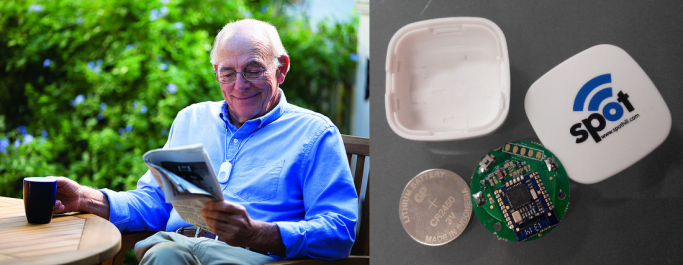
[16] When we speak of an IPS, the image of a plan with moving points, quickly comes to mind. This is not what we want. We want to use the locations in a way that allows us to say something similar to: X certifies that Y was in place Z at time T.
To do that, we believe that, currently, there is no better technology than blockchain. Storing the locations in a blockchain allows us guaranteeing that [9]:
- The locations are stored in a distributed ledger and it is not possible to block their access.
- A message cannot be repudiated.
- It is not possible to modify or remove registered locations.
- It is not possible to add past information that can be trusted. The timestamp of the location and the timestamp of the transaction will determine if the message should be trusted or not.
We do not want to cheat you, we would have liked to develop a visualization tool too. At the beginning of the challenge, we even started to develop a tool for it (among other things) [12]. A picture is worth a thousand words.

Why did we abandon the development of this tool? The main reason was that we had to prioritize and focus our efforts on the certification processes instead of the visualization.
To make it even clearer, we finished with the IPS in mid-February, and we had a full version of our proposal by the end of that month. We could have finished this visualization tool. Instead, we preferred to use the available time on what we considered most necessary, validating our Proof of Concept (PoC), the scalability [10,13,14] and the usability [12,15,16].
This is the general idea of our proposal. We have tried to explain it in a simple way, but since it never rains to everyone’s taste, for some of you it might have been too long and for others too short. For the latter, we refer you to these posts [2,13] in which we try to explain in more detail what is the approach that we propose.
What we are. Results and lessons
How we compete

Since the challenge began, we have had an idea in mind, we are competing. Our goal is to gain experience, but if we are competing, we will try to win, and because of that, we have tried to do our best 😉
And we want to highlight the above because it is probably one of the greatest personal lessons we have learned during the challenge. If we had not competed in the challenge trying to give the best of us, we would never have done anything of what we have done. Looking back we are proud of what we have achieved. We do not want to encourage anyone to become a psychopath obsessed with victory, but to set goals and give the best of themselves to achieve them. It’s great to compete, even against oneself.
We summarize below those things which we believe that are important to analyze in order to know how we have competed: i) what we are, ii) our approach, iii) our technological stack and iv) our relationship with the community. Due to its importance, we will show the results in a separate section.
What we are

We present ourselves. So you can get an idea of our background, we quote from [4]:
Our team consists of three computer engineers; all of us from different fields, with great interest and curiosity about IoT but inexperienced in it. Because we work with some Eclipse tools we knew about the challenge, which we thought was a great opportunity to gain experience and (why not?) get some cool gadgets for free!
We knew some Eclipse IoT stack tools, but we had worked only a little with them (Kura, Mosquitto, Paho and maybe some other). For this reason, and based on the limited knowledge we had, we started looking for an (i) interesting, (ii) useful and (iii) realizable idea.
Although we are computer engineers, so far we have dedicated more time to research than to development. Francisco J. Quesada is a PhD student, Francisco Moya is also a PhD student (he also works as Android developer), and Fco Javier Estrella is a PhD in Computer Sciences since 2015 (he recently has focused on software development).
Now, that the end of the challenge is near, we can say that this is the first time that we have participated in this kind of projects, and it has been a fantastic and enriching experience for us. We think that this is a wonderful opportunity for many professional profiles. Students, recent graduates, entrepreneurs, curious, or like us, researchers looking to gain experience in the field.
Approach

Despite being computer engineers, we have dedicated much more time on research than on development. This has conditioned us both when making the proposal and when developing it. In what way?
We believe that our strengths lie in proposing solutions and verifying their viability. Because of that [4] we focus on an (i) interesting, (ii) useful and (iii) realizable idea and [9] we did not want to propose anything that seemed like a good idea, but in practice would not be feasible. As it is indicated in the proposal, we have always prioritized what we considered most necessary, to validate our PoC.
We do not believe that our approach is better than others. We think that it is the best one for our profiles. As we said before, in our opinion, the challenge is a great chance because it allows the participation of professionals of various types of profiles.
Technological Stack

In the past years we had developed some Eclipse RCP applications, so we knew OSGi. For us [5] OSGi is ideal for managing IoT gateways and we believe that it is a wise movement that Kura has been developed using it. It is difficult to explain OSGi in a simple way and it may be even more difficult to explain its benefits (http://tuhrig.de/when-modularity-comes-down-to-osgi/). For us, Kura is one of the best examples to prove the suitability of OSGi in certain scenarios.

Our proposal is built using Kura, being its versatility vital for our proposal. [4] Something that makes us feel especially happy is that everything works in Kura. We know that for some parts of the system there are better alternatives, but deploying everything in the same tool will help in its deployment, management and maintenance.
Obviously, we use other things besides Kura:
- MQTT. Kura provides an MQTT broker, Artemis, and a MQTT client, Paho. Is not it great? 🙂
- React. We have developed two websites [7,11] as Kura components that use this library.
- Java servlets and WebSockets. We use them in Kura to provide the backend of the websites and the Android app. Moreover, we had to patch some Jetty packages in order to be able to use WebSockets in Kura.
- The Apache Commons Mathematics Library. We had integrated this library in Kura to execute least squares methods.
- The Legion of the Bouncy Castle Libraries. These libraries were also integrated into Kura. In this case, they are used to sign an encrypt locations.
- IOTA. A blockless distributed ledger. We have integrated in Kura a patched version of JOTA that allows us to communicate with an IOTA node to make and read transactions.
- Android.
We would like to highlight that [12] in our proposal we do not use the official version of Kura, but a fork in which we solved an iBeacon’s bug in the Raspberry 2. Notice that once we certainly figure out if this is a failure of Kura or an incompatibility with our system, we will carry out a pull-request.
By the way, we are pleased to tell you that we have already made a small contribution to Kura and that makes us extremely happy 🙂
Community

Due to our professional background, we know very well the importance of disseminating the obtained results. We know that this can be extremely boring, but the effort is worthy.
In our case, we started this blog when we applied for the challenge [1]. Since then, we have posted seventeen times. Sometimes with articles in which we explain the proposal [2,4,9], sometimes with more technical articles explaining the parts of our solution in detail [6,7,8,11,14,16] and other times with more general articles [1,3,5,10,12,13,15].
In addition to the dissemination of the results in the blog, we have also created the twitter account @trustiot in which we have been tweeting our results.
Thanks to this, and to the members of Eclipse IoT who have helped us to spread our work, we have obtained quite acceptable levels of dissemination:
- Our newly created blog has received 3165 visits.
- Our newly created twitter account has 33 followers. Ok, only with us there are already three followers…, but you will not take away our happiness :). For a newly created account that specifies that it is for a challenge, we think this number of followers reflects that there are people interested in what we propose.
- We were surprised to find that we received some visits from Reddit (#1, #2, #3, #4).
- We were even more surprised to realize that in the #ict channel of Discord community of IOTA some users were analyzing if what we published in one of our last posts [14] could be useful for this project. After analyzing the ICT project we believe that what we do is not valid for that project, but who knows, maybe something of we do might help them to see something clearer (perhaps communicating IOTA nodes using MQTT to create a cluster is not a bad idea).
At the beginning of this section, it is said that all this work is boring, and we have not changed our opinion, but in view of the results, we think that all this effort was well spent.
We want to end the section indicating that everything we have developed is open source. There are three repositories at your disposal:
- JURA (https://github.com/trustingiot/jura) [6,7,8,11,14]: Trusted Indoor Positioning System for Kura.
- MIDE (https://github.com/trustingiot/mide) [10,12,13,15]: A set of experiments conducted for the challenge.
- MIRA (https://github.com/trustingiot/mira) [16]: An Android app for nursing homes.
Results
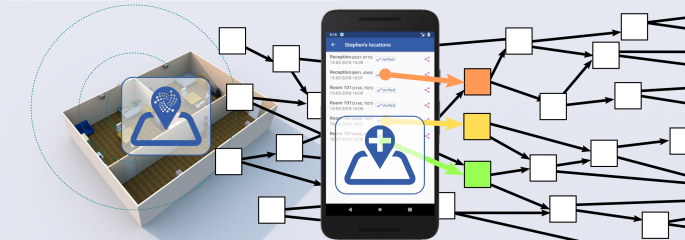
Our most tangible results can be seen just before the title of this section, three software repositories. If someone is curious about the origin of the names, clarify that we (almost) always use the third person singular of a Spanish verb (jura=it swears, mide=it measures, mira=it looks, …).
Do you want to know what you can find in each repository? We tell you.
Jura

[11] Jura is not a monolithic tool, it is a Kura’s components based tool:
- Jura: “It swears”; a set of Kura’s components to deploy trusted indoor positioning systems.
What does the above mean? It means that in each particular device it is only deployed what is necessary.

We said earlier that we have tried to do our best and we think that the parts of Jura are an example of this. We have not only implemented the basic functionality, but everything we think is useful (different beacons protocols, different positioning algorithms, different systems for the certification of locations, …).
We invite you to review the different post to discover all the functionality. Some of them even include gifs that show what the system can do [7,11].
Mide

Usually, when we develop a PoC we spend more time performing tests than building the final solution. Our case has not been an exception.
When we made the proposal we decided to use some tools that we had never used before. Due to this, we spent the first months of the challenge doing all kinds of tests and it was not until the end of January when we were able to connect all the pieces [4].
What is Mide? A repository in which we have generalized some of the experiments that we have carried out as analysis tools.
Mira
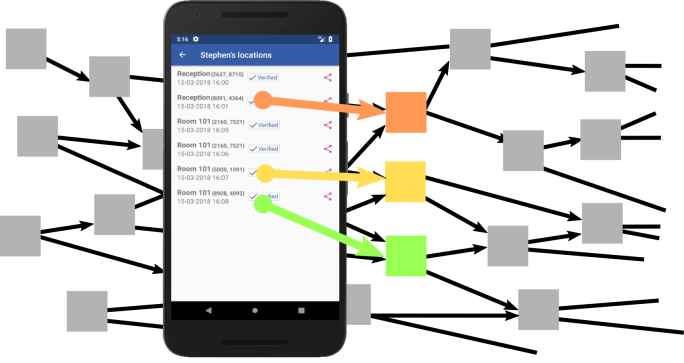
Our PoC has two parts. The main one is Jura, the other part is Mira.
Mira is an Android app focused on the relatives of nursing home’s residents and built using the Anonymous Trusted IPS of Jura.

Mira allows access to the records of resident’s locations from an Android phone. Since it uses the [11] Anonymous Trusted IPS of Jura it can guarantee that all locations are encrypted independently and that it is not possible (or at least it is not easy) to apply heuristic methods to associate transactions with a user.
Mira not only allows to check the resident’s locations by decrypting the transactions and validating its digital signature but also allows to share them with other Mira’s users using MQTT. As each location is sent to a unique address and is encrypted using a unique key, sharing an event does not compromise the resident’s security and anonymity.
Does the nursing home had some careless attitude with your relative and you have an event that proves it? Share it with who you need (your brother, your lawyer, your insurance company, …) and enforce your rights.
Do you want to know more about Mira? In its post, we show you what it does with a use case full of videos [16].
Where we go. Future works

We are very happy with our experience in the challenge as well as with the results obtained. It is said that when you are happy, it shows.
At this moment, we might say that we have something like an overflow of ideas 🙂
A proof of concept is only a proof, but we believe that the results are good enough to propose more ambitious goals. We do not know yet what will be our next step. Perhaps we will propose a more general solution or maybe we will contact nursing homes in the area to obtain their feedback, or even carry out an experimental trial. If you found interesting our proposal, we encourage you to add our blog to your bookmarks. We have the feeling that in the future we will post much more interesting things 😉
Regarding IOTA, in our opinion, it is the future. Well, maybe not IOTA, but it will be very similar. When the challenge began we had a general notion of blockchain technologies. At this moment, we are so convinced of the advantages of those technologies, but we are not experts yet. For this reason, during the next months, we are going to eagerly study a stack of blockchain’s books with the aim of understanding these technologies in depth.
Throughout the challenge, we have realized that there is room for a huge number of solutions in this area. Some, as in the case of our proposal, will use these technologies whereas others will improve the way in which we interact with them. We believe that this is the biggest cake to be shared in the coming years and that all of us can take our part. As before, we are still unclear about the next step to take in this area. However, we are calmed because we know that while we read the books, we will have time to think about it 🙂
As a curiosity about the latter, in the last days, we have started to be interested in IOTA nodes, especially thinking about permanodes. Who knows? Maybe in a few weeks you will find a new IOTA public node powered by Up Squared 🙂
Posts
- Kick-off (Nov 13, 2107).
- Our Approach. Part I. Indoor Positioning System (Dec 3, 2017).
- In the top 12 proposals!!! (Jan 25, 2018).
- Preliminary results (Jan 28, 2018).
- Building Deployment Packages for Kura (Feb 2, 2018).
- Faro: A Multimodal BLE Beacon (Feb 7, 2018).
- Graba: A BLE Beacons Recording System (Feb 12, 2018).
- Ubica: An Indoor Positioning System (Feb 21, 2018).
- Our Approach. Part II. Trusted IPS (Mar 1, 2018).
- The Race to the Tangle (Mar 1, 2018).
- Firma: In IOTA We Trust (Mar 2, 2018).
- Testing: One, two, three (Mar 4, 2018).
- The Race to the Tangle II. Teamwork (Mar 7, 2018).
- Parallelizing IOTA transactions in Kura (Mar 10, 2018).
- Testing: Four, five, six (Mar 14, 2018).
- Mira: To Enforce your Rights (Mar 15, 2018).
- Final report (Mar 15, 2018).




